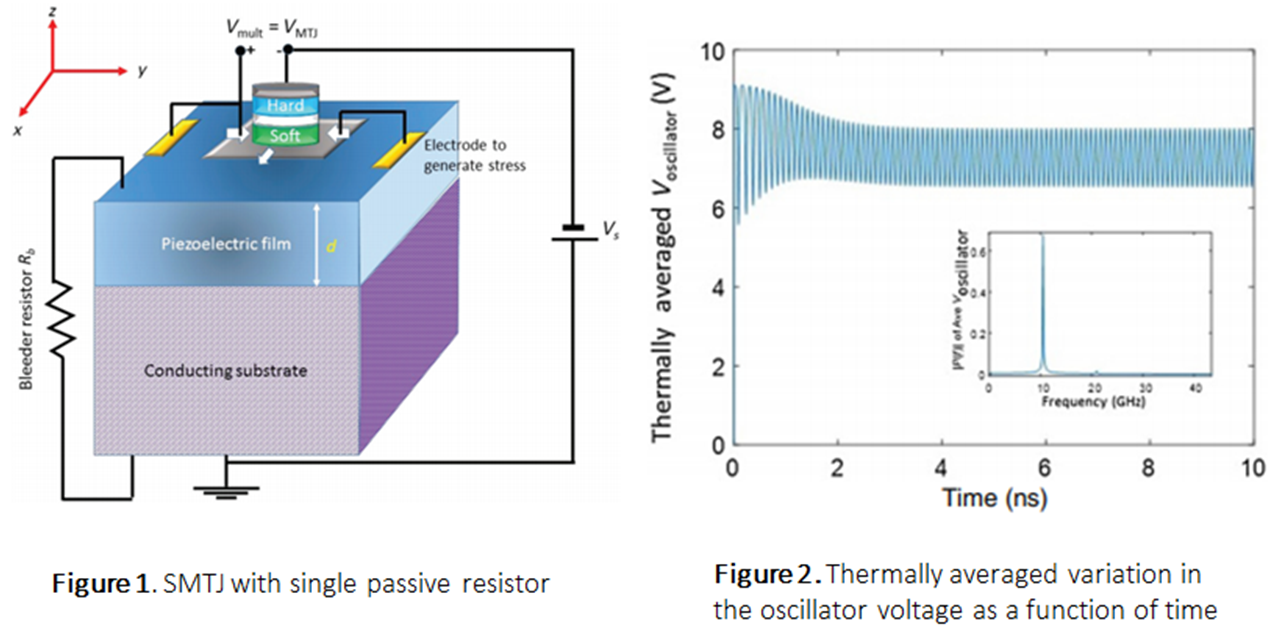Nano-magnetic Devices
Microwave Oscillators
A spectrally pure X-band microwave oscillator
There is a growing interest in exploring potential replacement for electronic components in a device (e.g., transistors, op-amps, etc.) in digital switching circuits. A new trend in micro- and nanoelectronics and material science has brought in a method called straintronics. Straintronics uses strain engineering methods and strain induced physical effects in solids to develop next-gen technologies for information, sensor, and energy- saving devices. The technique presented here uses magentotunneling junctions (SMTJs) belong to this area of straintronics. The technology presented here is a single straintronic magentotunneling junction with a passive resistor which acts as a Microwave Oscillator. Conventional microwave oscillators require operational amplifiers, capacitors, and resistors. This new technology reduces the device footprint, cost all while improving device reliability. The device has also been shown to be purely spectral (one frequency output) this is a device where magnetic interaction acts as an oscillator.
The technology
Inventors at Virginia Commonwealth University currently have a proof of concept with published findings from simulations. SMTJ have soft layers which are composed of two-phase multiferroics comprising a magnetostrcitive layer elastically coupled to a piezoelectric layer. This device is an analog application where magnetic interactions such as shape anisotropy, strain anisotropy, dipolar coupling field, and spin-transfer torque in the soft layer of the SMTJ. The diagram Figure 1 below shows the proof of concept and the output Figure 2. The device implemented as a microwave oscillator has an excellent quality factor >50 and is purely spectral, as shown in simulations. To achieve this, it would take multiple electronic components to implement in traditional electronics. This technology is proposed to reduce device footprint, a lower cost which could prove advantageous in applications for 5G technologies and the Internet of Things (IoT) technologies.

